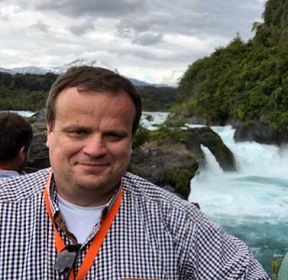
Darius Chile
Technische Universitat Munchen GermanyTitle: Prevalence, risk factors and antibiotic resistance of staphylococcus aureus and mrsa nasal carriage among healthy population in ibadan, Nigeria
Abstract:
The current AI approaches based on Deep Learning were originally developed for fast data queries in large datasets for search engines, social media, and advertising. The common property of these fields is that they are not used in critical decision loops (control) of a robotic system, but they serve as an index key to finding previously searched information that is similar to the current situation. This origin resulted in a strong development of the data labeling direction that is essential for fast data association. In my talk, I want to discuss the necessary extensions that need to be added to the current AI approaches to make them applicable for decisions on robotic systems. While the approaches become increasingly better in answering the "what is there?" question, a robotic system requires in addition also information about the "confidence" of each query. A 95% accurate system running for 24 hours fails during 72min/day. The control system needs to identify these periods to prevent damages to the system and the surrounding environment. Additionally, usually, not a single sensor is used for control, and for a robust data-fusion, a (metric) error covariance is important. I show ways how to achieve this goal in the DL context. The last step is a discussion of temporal extensions of the current AI approaches, which need to understand not only the current snapshot of the scene but its temporal evolution to grasp the current context and model dynamic events. I will present our initial work on temporal scene modeling and discuss the necessary updates to the benchmarking in current AI to make it applicable to robotics
Biography:
Darius Burschka received his Ph.D. degree in Electrical and Computer Engineering in 1998 from the Technische Universitätt München in the field of vision-based navigation and map generation with binocular stereo systems. In 1999, he was a Postdoctoral Associate at Yale University, Connecticut, where he worked on laser-based map generation and landmark selection from video images for vision-based navigation systems. From 1999 to 2003, he was an Associate Research Scientist at Johns Hopkins University, Baltimore, Maryland. Later 2003 to 2005, he was an Assistant Research Professor in Computer Science at Johns Hopkins University. Currently, he is a Professor in Computer Science at the Technische Universität München, Germany, where he heads the Machine Vision and Perception group, he is a member of the Scientific Board of the Munich School for Robotics and Machine Intelligence (MSRM). His areas of research are sensor systems for mobile and medical robots and human-computer interfaces. The focus of his research is on vision-based navigation and three-dimensional reconstruction from sensor data. He is a Senior Member of IEEE.
